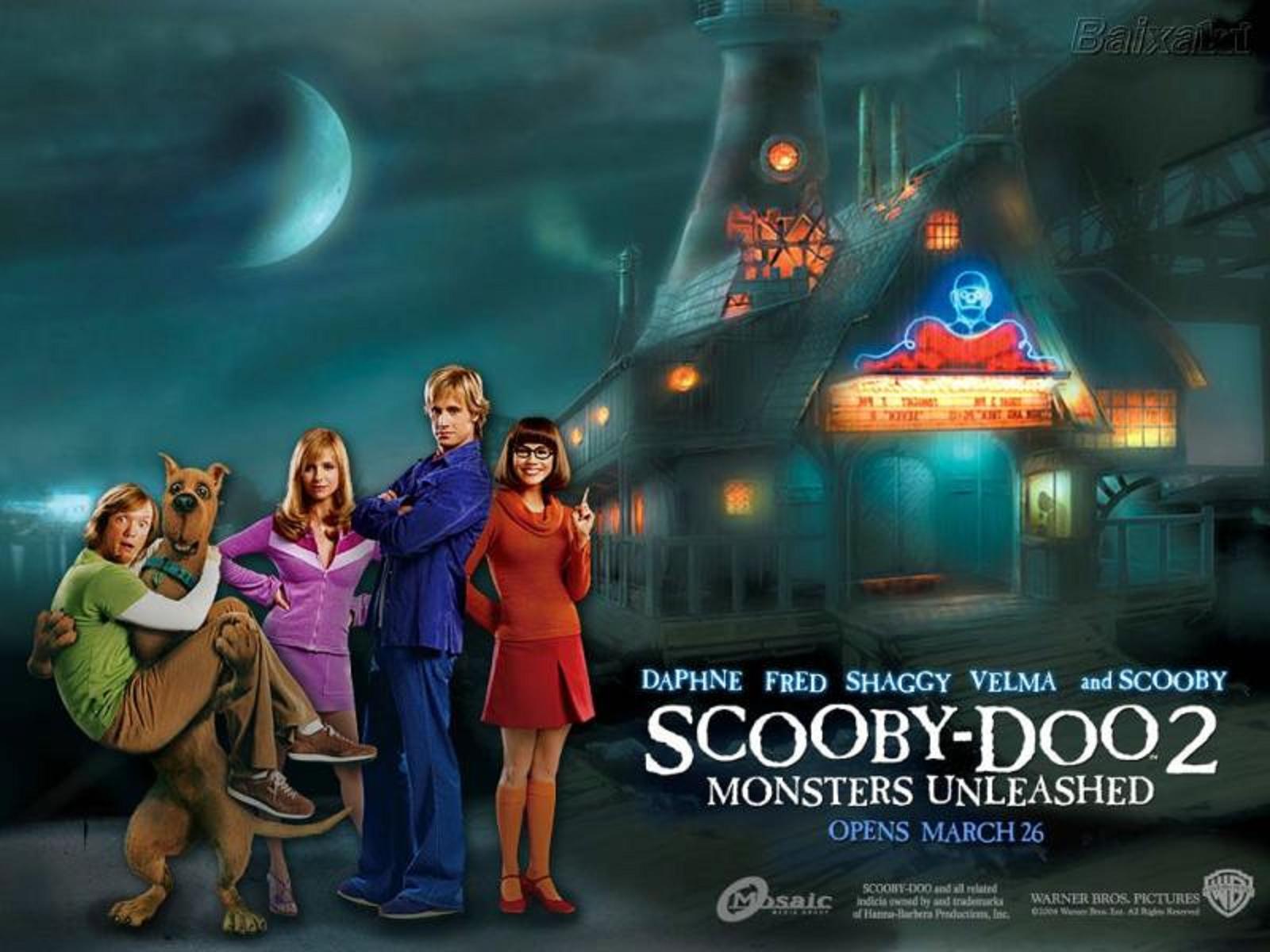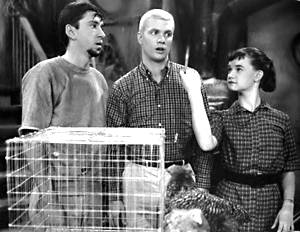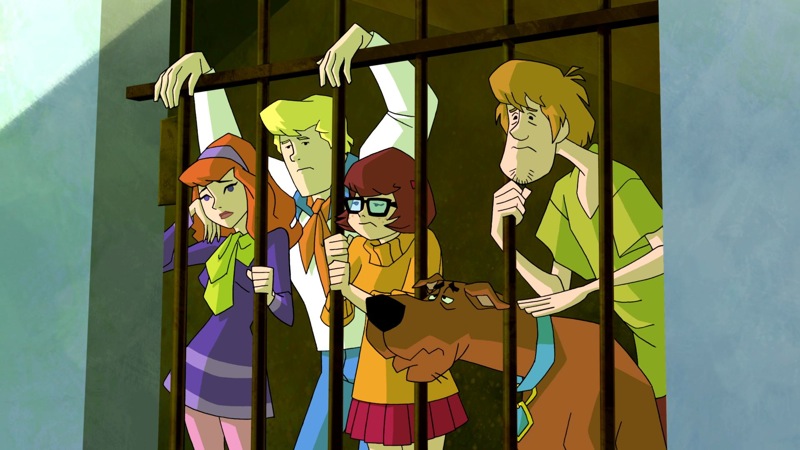Scooby-Doo! Mystery Incorporated
Scooby-Doo Created by Joe Ruby and Ken Spears
Scooby-Doo Mystery Incorporated series produced and written by Mitch Watson
Scooby-Doo Mystery Incorporated series Showrunners (Supervising Producers) Spike Brandt and Tony Cervone
imdb, Cartoon Network, Various Times
One of the best procedurals currently on television is a half-hour cartoon that has been on television in one form or another since 1969 and was a major inspiration for what many (myself included) believe was the greatest serial drama in the history of television. The irony is that Scooby-Doo was solidly mediocre until the debut of Scooby-Doo! Mystery Incorporated last summer.
The reason that Scooby-Doo was mediocre for decades was that it was designed to protect children from violence on children’s television. When it debuted in 1969, it was intended to be a safer replacement for its more violent predecessors like Jonny Quest and Space Ghost. The series was formulaic to a fault: the Scooby gang investigate an apparent supernatural mystery, which frequently involves being chased by the monster, until they manage to trap it with some Rube Goldberg contraption built by Fred and reveal that the monster is some older, adult crook.
One of the most damning indictments of the series was intended to be a compliment by American Center for Children and Media executive director David Kleeman, “It doesn’t take very long for kids to know and expect that whatever it is — a ghost or a werewolf — it is really just someone playing a trick. Overall, it’s just not a show that is going to over stimulate kids’ emotions and tensions. It creates just enough fun to make it fun without getting them worried or giving them nightmares.”
Scooby-Doo gave us monsters, but reassured us that they were really adults wearing a rubber mask. Oddly, in the process of preserving the safe status-quo, it did so in the context of a group of teens constantly uncovering the corruption of adults.
With Scooby-Doo! Mystery Incorporated, the series finally exploits and explores that contradiction. The formula is unchanged, but now has a real menace behind it as the Scooby gang find that there are virtually no adults that they can trust.
This new series is set in Crystal Cove aka “The Most Hauntedest Place on Earth” and the town’s whole economy is built around supernatural tourism, meaning that every mystery that the gang solves literally hurts the local economy. This brings the gang into direct conflict with the town’s adult leadership and their parents. (Fred’s Dad is the Mayor, Velma’s parents run the town’s Spook Museum and the Crystal Cove Mystery Tour bus.)
While the gang is solving one smaller mystery per episode, they are simultaneously pursuing a larger mystery about a previous Mystery Incorporated group of teen detectives who disappeared. A mystery that, in a sense, was covered up by the entire town.
At the same time that this series raises the stakes on the gang’s conflict with adults, it also ups the ante on the emotional conflict within the group. In a sense, the group is in conflict not just with the adults around them, but with the adults within them as well – the adults that they are becoming.
Scooby-Doo has always had interesting and ambiguous group dynamics. This has led to multiple interpretations of those dynamics. The traditional view is that there are two couples: Fred and Daphne plus Shaggy and Velma. Part of the ambiguity is that these pairings were always hinted at, but never really confirmed. Daphne was always more interested in Fred and Velma was always more interested in Shaggy than vice-versa.
Scooby-Doo Mystery Incorporated! gives us this traditional group dynamic but complicates matters by having the relationships evolve with Fred and Daphne, Shaggy and Velma alternatively pursuing and being pursued, but for a variety of reasons never in synch – like two sets of magnets whose polarity keeps switching, but always repelling each other. At the same time, the lack of resolution to the relationships allows the ambiguity to persist and the alternative explanations continue to be possible.
The most popular alternative theory to the Scooby-Doo group dynamic is the one championed by Joss Whedon: the whole gang are in love with Daphne. This, essentially, is the dynamic explored in Buffy the Vampire Slayer. The debt that Buffy owes to Scooby-Doo is so obvious that Whedon hung a lampshade on it by having Buffy refer to her teen gang as the “Scooby gang”. Buffy was modelled on Daphne obviously, Xander on Shaggy, Willow on Velma and Angel on Fred. Whedon even gave us Scooby-Doo by introducing Seth Green as the werewolf Oz.
(Note that when I say modelled on, I am not implying plagiarism, except to properly quote T.S. Eliot “Immature poets imitate; mature poets steal; bad poets deface what they take, and good poets make it into something better, or at least something different.” In any case, the Scooby-Doo characters are hardly original. As Mark Evanier explains, “The four kids were based — in the same way The Flintstones was inspired by The Honeymooners — on the old TV show, The Many Loves of Dobie Gillis. Fred was based on Dobie, Velma on Zelda, Daphne on Thalia and Shaggy on Maynard.“)
Buffy may be partly inspired by Scooby-Doo, but it is also vastly different. For one thing, the monsters are real. Buffy uses monsters to explore the emotional wasteland of adolescence and those emotions are not something that can be dismissed with a rubber mask on Old Mr. Smithers. In its first three seasons, Buffy revolves around the idea that high school is Hell, while Scooby-Doo generally avoids high school, perhaps for good reason.
Both series distrust adults and, as mentioned above, Buffy‘s complicated social dynamic springs from Scooby-Doo‘s (or at least one theory of Scooby-Doo‘s social dynamics.)
The genius of Joss Whedon is that he used Buffy to explain Scooby-Doo but also used those explanations as a plot-engine to drive his narrative. Xander (Shaggy) has no interest in Willow (Velma) because he is in love with Buffy (Daphne). Angel (Fred)’s love of traps and odd choices of wardrobe are because he is a much older vampire and he is aloof from Buffy because falling in love with her and attaining a moment of perfect happiness would cause him to lose his soul and turn into the monstrous Angelus.
The key to the “Everyone Loves Daphne” hypothesis is that Velma is a lesbian, secretly in love with Daphne, a secret so deep that even Velma may not be aware of it – closeted even from herself. On Buffy, despite a brief beard-like dalliance with Oz, Willow eventually realizes that she is a lesbian. Part of her maturity is realizing that a romantic relationship with Buffy is impossible, leading to her romance with Tara.
The influence of Scooby-Doo on Buffy is not a one-way street – the two series cross-pollinated. Influenced by Buffy, in the 90s Daphne evolved as a character, from a frequently captured danger-prone thrill-seeker, the female equivalent of Robin the Boy Hostage, into a more self-reliant martial arts expert.
The biggest obvious influence of Buffy on Scooby-Doo was TV’s Buffy, Sarah Michelle Gellar, being cast as Daphne in the two theatrical Scooby-Doo films. Not surprisingly, the same dynamics as Buffy are repeated: all the characters are in love with Daphne. Seth Green even makes an appearance in the second film, playing Velma’s love interest/beard – just as he did for Willow on Buffy.
Buffy also influenced the structure of Scooby-Doo! Mystery Incorporated into short procedural episodes linked by an over-arching narrative and a season-long Big Bad. The third season of Buffy is particularly influential to the first 26 episodes of Scooby-Doo! Mystery Incorporated.
Of course, the “Everyone loves Daphne” theory is not the only alternative theory of Scooby-Doo‘s social dynamics.
My own favourite theory about Scooby-Doo is that everyone on the show (with the exception of Scooby-Doo himself) is in love with someone who doesn’t (and can’t) love them back – that there is not one gay character on Scooby-Doo, but two. Shaggy is love with Velma, who is in love with Daphne, who is in love with Fred, who is in love with Shaggy. The relationships are a perpetual motion machine of tension, with every character chasing another and true love being an impossible dream.
As Chris Sims of Comics Alliance has noted, Scooby-Doo Mystery Incorporated takes Fred’s 40 year obsession with traps and uses it as a compelling character defining moment, “every one-note joke about his [Fred’s] goofy love of traps is suddenly about a kid who obsesses over trying to keep the things he loves close to him, and who can’t figure out any other way but to literally build cages around them.” At the same time, Fred’s obsession with traps also works as a metaphor for his sexuality: Fred is so closeted that he build closets to enclose other people.
What makes Scooby-Doo! Mystery Incorporated great is not that Fred and Daphne are gay, but that the series allows for the ambiguity that they might be gay. The series is self-aware of that ambiguity.
The series is also self-aware of its own history and its place in pop culture: it playfully incorporates elements from the whole 40 year history of Scooby-Doo along with the history of Hanna Barbera, including an episode with girl-rock band The Hex Girls which sees Daphne unleashing her inner Goth Rock Chick, episodes featuring Vincent Van Ghoul, an episode that introduces the Crystal Cove Animal Asylum of the Criminally Insane which includes a smarter than the average bear and a fantastic episode where a delirious Scooby-Doo has an adventure with Captain Caveman, Speed Buggy, Jabberjaw and Funky Phantom – all Hanna-Barbera characters whose series were closely modelled on Scooby-Doo.
It’s not just stars of Hanna-Barbera who turn up. The series has also featured Harlan Ellison playing himself, Beverly D’Angelo playing her character from the National Lampoon’s Vacation series, David Faustino from Married With Children playing a character named Bud, along with characters modelled after Dylan and Brenda from Beverly Hills 90210 and paramedics modelled after John Gage and Roy DeSoto from Emergency!
Finally, the series has paid tribute to science-fiction and horror classics including Duel (The Secret Of The Ghost Rig), Phantom of the Opera (In Fear of the Phantom), War of the Gargantuas (Battle of the Humungonauts), Terminator (Howl of the Fright Hound), H.P. Lovecraft (The Shrieking Madness), Invasion of the Body Snatchers (Where Walks Aphrodite), Saw (Escape From Mystery Manor) and the works of Vincent Price (NightFright). This is hardly an exhaustive list – I haven’t even mentioned the episode called Crab Net of Dr. Calimari!
Scooby-Doo! Mystery Incorporated is a smart, self-aware procedural that draws inspiration both from its own history and the great TV series that it helped inspire to tell morally complicated stories that confront the distrust that the series has always had for adults and the complicated relationships between Fred, Daphne, Shaggy, Velma and Scooby-Doo.
It also proves (this list notwithstanding) that Scooby-Doo is TV’s greatest dog.
– Michael Ryan





